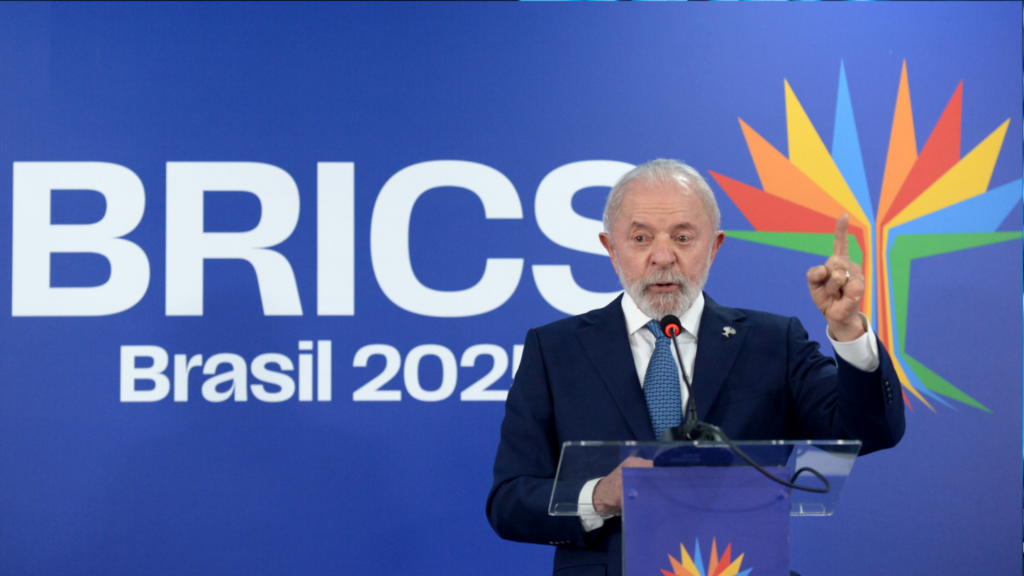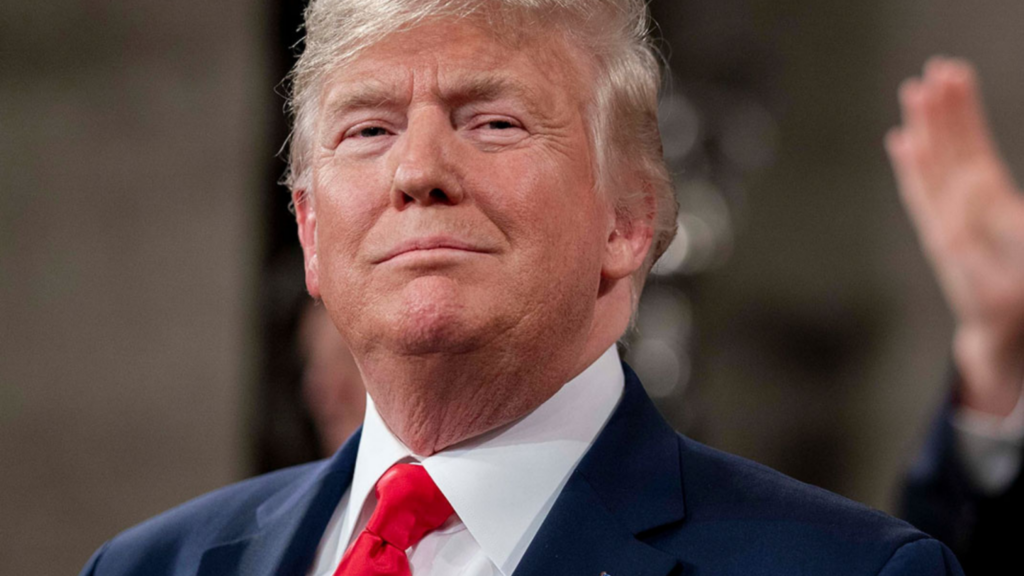Why the World Still Needs China
How China’s power has become a political risk.
China, one of the most impoverished countries in the past, had a GDP of only U.S.$150 billion at the start of the “open up” period in 1978, representing merely a 1.8% Share of global output. Consequently, no one would have ever expected its rise. However, to the contrary, today, China is the world’s second-largest economy, with a GDP exceeding U.S.$18 trillion, contributing significantly to global economic growth. People’s Republic of China (PRC) produces 19.7% of the world’s output (IMF, 2025), stands as the largest trading partner for roughly 140 economies (AP, March 2025), turns out about 32 % of all manufactured goods (Deutsche Bank, 2025) and refines nearly 70 % of the planet’s critical transition minerals (IEA, Global Critical Minerals Outlook 2025). Thus, the magnitude of China’s current position is immense. The following sections will elaborate on the dependence of other countries on China, particularly in certain key areas that influence their industrial, military values, and the political risk of being blocked from acquiring them.
Critical Minerals
Critical minerals are essential components in various sectors, including renewable energy, clean technology, defense, and national security. They are crucial for the development of technologies such as electric vehicles, wind turbines, and batteries. Therefore, China is the destination country for refining. In 2024, it processed 82 percent of the world’s natural graphite and held 28 percent of global reserves – the feedstock for every EV anode. It also handled almost 90 percent of rare-earth separation in 2023. Beijing realized the strategic value of critical minerals during the early 1990s, which led to the possession of the majority of them decades later.
Being able to halt the supply of raw materials at peacetime hints at the potential risk in the event of war. To the worst consequence, China can pause its export of minerals, to indirectly stop countries involved in a war with Taiwan. However, in the long run, without a sufficient stockpile, a belligerent state cannot remain in effect. Although the U.S. is diversifying its rare earth sources through negotiations with Ukraine for mining access and exploring new domestic deposits, China continues to reap the benefits of its long-term vision, as evidenced by its upper hand in the trade war with the U.S.
Cheap Labor
In a world of capital, companies profit by reducing costs or raising prices, regardless of the quantity sold, which is the essence of the cheap labor in China. Thus, China’s labor scale still underwrites globalization. In 2024, the country counted ~300 million domestic migrant workers feeding factory zones, an industrial labor pool no rival can match. Meanwhile, U.S. production workers earn about $31.34/hour, while China’s manufacturing compensation is roughly $6–7/hour, and it is the scale + clustering that matters most. Additionally, eight Chinese ports in the global top 20 handled 55.6% of the top 20 throughout 2024/25 while China’s total container volume topped ~330 million TEU in 2024. Consequently, China produces about one-third of the globally manufactured goods and runs the world’s busiest port in Shanghai, at 50 million TEU in 2024.
Enabling a cost-effective factory to generate piles of must-have day-to-day products for oneself is enjoyable until it turns into a reliance and vulnerability. During the COVID-19 lockdown, it is crucial to remember that ordinary Americans could not access daily supplies such as toilet paper; people had to strive for the bare essentials. One small thing might seem insignificant; however, when the reality is that “Made in China” encompasses the entire globe, with the majority of products being from China, literally everything, then we unquestionably need to reconsider the decision to designate China as the world’s largest supplier. Due to the risk that China could exploit this weakness by abandoning its provider role to disrupt the global economy for a predictable all-out conflict with the West (starting from Taiwan). Moreover, Chinese people are chess pieces that can be easily incited and sacrificed, something the party has done many times over the past decades.
China’s cheap labor also comes with the cost of moral sacrifices and soft power retreat, such as toleration of human rights abuses in Xinjiang, widespread inhumane working conditions, and disregard for democracy and sovereignty. Furthermore, a notable example of the Trump administration’s transactional diplomacy in 2019 was its downplaying of the seizure of Hong Kong under the CCP’s national security law.
There is a general false perception from the West about China’s willingness to carry out warfare at the expense of its nationals, while it is nihilistic. The PRC government can ditch or put aside its rural workers whenever needed to disrupt in the West, since the regime has total control over its people, and the survival of the communist party is the foremost agenda beyond anything.
The Market
Supply and demand, businesses need to sell their products to people for profit, which is why having good markets is so crucial. China’s market still sets the pace. The country counted 1.408 billion people at the end of 2024 (NBS). Its shoppers spent ¥48.79 trillion (≈US$6.8 trillion) on retail goods in 2024, with online sales at ¥15.5 trillion, 27% of all retail. China was again the world’s largest auto market (≈31.4 million vehicles in 2024) and sold ~11 million EVs, nearly two-thirds of global EV sales. For multinationals, exposure is systemic: about 7% of S&P 500 revenue now comes from China, and ~145 economies trade more with China than with the U.S.
China’s massive market attracts foreign companies and is a money tree that contains tremendous potential political risk. The Chinese government can choke the throats of foreign companies in China at any time for political reasons. Thus, investing in countries such as China essentially is a huge gamble that risks bankruptcy from warfare or simply purging from the communist party.
The weak industries of the European countries rely on China’s market to make ends meet. In 2025, Beijing levied up to 34.9% tariffs on EU brandy while exempting select Cognac houses that accepted minimum prices—linking liquor to EV-tariff talks. At the same time, German automakers faced tariff threats on large-engine imports and a sharp sales slump (Porsche –28% in China), as local EV rivals surged.
When these key businesses primarily rely on Beijing, it poses grave risks in multiple domains. EU members are subject to bullying from China if they do not act in favor of the regime. A demand from China is a vulnerability for oneself. Meanwhile, China can always threaten to negotiate trade-offs when it has the upper hand. A tendency to survive in a comfortable market without competitive risks will hurt domestic innovation, thus hindering potential industrial progress. The EU has enjoyed peace for too long post-World War II Not only have they taken advantage of the U.S.’ protective role in global governance by not fulfilling the committed NATO budget, but they also have made no attempt to make progress on self-development, all clearly shown in the need for energy from Russia, and market dependence on China.
What can be worse? China is exhausting its national power to trap new countries dependent on it, particularly Latin America and Africa, through the Belt and Road initiatives and numerous bilateral agreements covering infrastructure, agriculture, trade, and investment. China’s dumping has become a new phenomenon, as it funnels goods from overcapacity, making countries in the global south increasingly reliant on it. A future landscape is that these underdeveloped countries will end up entirely hinging on China economically, even militarily, which is why China is taking advantage of courting these “beneficial partners”.
Chinese Debt has also infiltrated these regions; oftentimes, the countries that have lent have no economic capacity to pay off at all. However, the rationale here is that China has never anticipated anything from them, but the original intent was to extract natural resources or establish more China-linked influence and presence within. There are even “non-investable countries” among them, yet, for strategic purposes and global dominance, China is willing to play a long-term game without expectations.
Not to mention, in the event of war, complete decoupling economically is expected. When conflicts sweep, all the capital assets are as fragile as paper. The affected countries should recognize the risk of economic ties with China from the beginning.
For The Future
China’s important position is undeniable: brutal dominance over rare earths, prominently affordable labor, and a massive market base. Although an existential adversary to the West, China still serves a unique role in its civilization to push human development progress; the world would be a better place now if China had been democratic. High risks come with high profits, which is where doing business with China stands. In stark analogy, the stake of a fundamental regime change for China is exceptionally high as well. We cannot determine how the Chinese think, but we can navigate and minimize the risk of sparking a major conflict by maintaining an open communication channel. Calculating the foreseeable stakes ahead will well reduce the future impactful consequences, which rearrange and reorganize the rules of the world.
Bibliography
- International Energy Agency (IEA) (2025) Global Critical Minerals Outlook 2025. Paris: IEA. Available at: https://www.iea.org/reports/global-critical-minerals-outlook-2025 (Accessed: 17 August 2025). IEA
- U.S. Geological Survey (USGS) (2025) Mineral Commodity Summaries: Rare Earths. Reston, VA: USGS. Available at: https://pubs.usgs.gov/periodicals/mcs2025/mcs2025-rare-earths.pdf (Accessed: 17 August 2025). U.S. Geological Survey
- U.S. Geological Survey (USGS) (2025) Mineral Commodity Summaries: Graphite (Natural). Reston, VA: USGS. Available at: https://pubs.usgs.gov/periodicals/mcs2025/mcs2025-graphite.pdf (Accessed: 17 August 2025). U.S. Geological Survey
- Reuters (2023) ‘China’s controls take effect; wait for gallium/germanium export permits begins’, 1 August. Available at: https://www.reuters.com/markets/commodities/chinas-controls-take-effect-wait-gallium-germanium-export-permits-begins-2023-08-01 (Accessed: 17 August 2025). Reuters
- National Bureau of Statistics of China (NBS) (2025) ‘Total Retail Sales of Consumer Goods in 2024’, 24 January. Available at: https://www.stats.gov.cn/english/PressRelease/202501/t20250124_1958445.html (Accessed: 17 August 2025). National Bureau of Statistics
- China Association of Automobile Manufacturers (CAAM) via State Council (2025) ‘China’s auto output, sales both reach new heights in 2024’, 13 January. Available at: https://english.www.gov.cn/archive/statistics/202501/13/content_WS6784c4a2c6d0868f4e8eec70.html (Accessed: 17 August 2025). State Council of China
- International Energy Agency (IEA) (2025) Global EV Outlook 2025 (Executive summary; Trends in electric car markets). Available at: https://www.iea.org/reports/global-ev-outlook-2025 (Accessed: 17 August 2025). IEA+1
- National Bureau of Statistics of China (NBS) (2025) Statistical Communiqué 2024 (migrant workers = 299.73 million). Available at: https://www.stats.gov.cn/english/PressRelease/202502/t20250228_1958822.html (Accessed: 17 August 2025). National Bureau of Statistics
- Shanghai International Port Group (SIPG) (2025) ‘Key Data of SIPG in 2024’ (Shanghai >50m TEU). Available at: https://en.portshanghai.com.cn/LatestNews/4397.jhtml (Accessed: 17 August 2025). en.portshanghai.com.cn
- U.S. Bureau of Labor Statistics (BLS) (2025) The Employment Situation—July 2025 (Table B-8; production & nonsupervisory earnings = $31.34/hour). Available at: https://www.bls.gov/news.release/empsit.t24.htm and https://www.bls.gov/news.release/pdf/empsit.pdf (Accessed: 17 August 2025). Bureau of Labor Statistics+1
- Deutsche Bank (flow) (2025) ‘China’s huge trade surplus—where next?’ (China ≈32% of global manufacturing; context for over-capacity). Available at: https://flow.db.com/trade-finance/chinas-huge-trade-surplus-where-next (Accessed: 17 August 2025). Flow
- Associated Press (2025) ‘China is the main trading partner of ~140 countries’, 6 March. Available at: https://apnews.com/article/china-tariffs-economy-congress-trump-bc6939090e5397d60e6d7880c82f3bb4 (Accessed: 17 August 2025). AP News
- Reuters (2025) ‘Porsche’s 2024 China sales fall by 28%’, 13 January. Available at: https://www.reuters.com/business/autos-transportation/porsches-2024-china-sales-fall-by-28-2025-01-13 (Accessed: 17 August 2025). Reuters
- Reuters / AP / Bloomberg (2025) on EU brandy duties in China (final ruling up to 34.9%; exemptions for major Cognac houses). See: Reuters (4 July), AP (4 July), Bloomberg (4 July). ReutersAP NewsBloomberg.com



